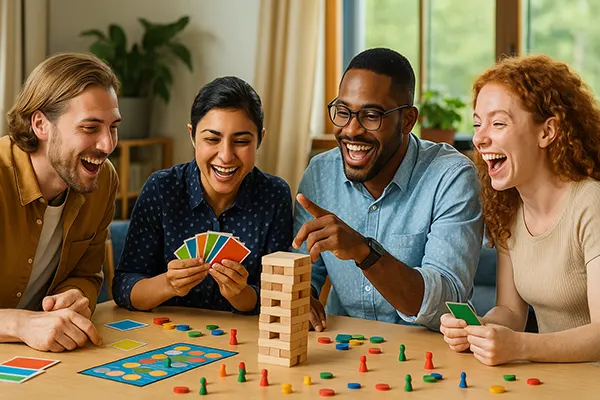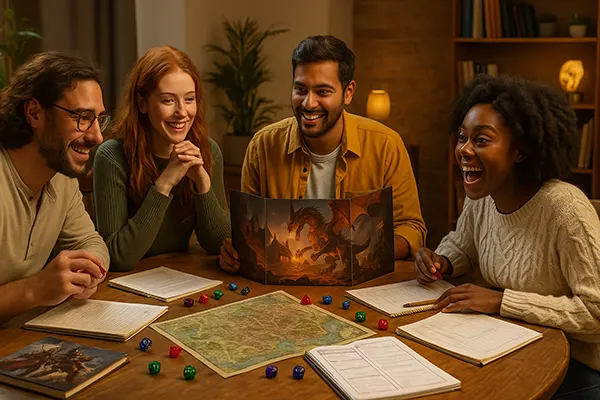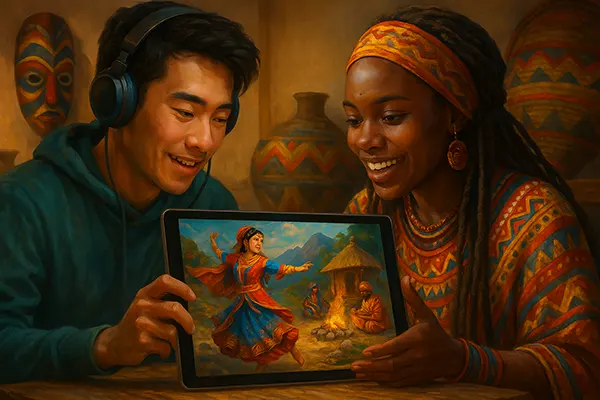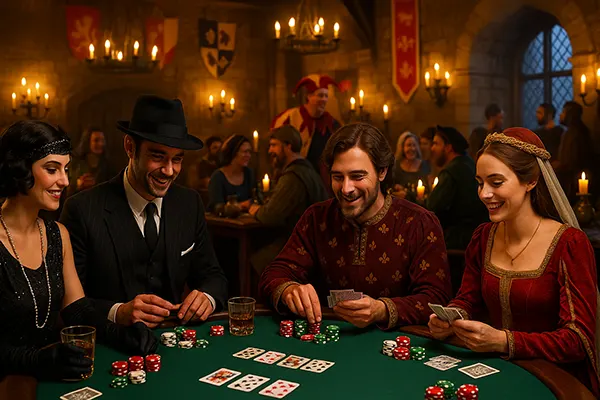
Intercultural Game Nights: How to Create a Truly Unifying Experience
In an increasingly interconnected world, creating events that help people from different cultures feel seen, heard and welcome is not only desirable — it’s essential. One of the most effective and enjoyable ways to achieve this is through well-designed games that transcend linguistic and cultural boundaries. Whether you’re hosting a multinational team meeting, a community celebration, or an online social event, games can create genuine connection where words may fail.
Games That Don’t Rely on Language
When planning an event that welcomes participants from various linguistic backgrounds, it’s important to choose activities that don’t depend heavily on verbal communication. Games based on visual, physical, or symbolic interaction are especially effective at bridging cultural gaps and fostering inclusion.
Classic examples include “Pictionary” or charades-style games, where gestures, facial expressions, and creativity speak louder than words. These games level the playing field and make everyone feel like they belong, regardless of their fluency in the shared language of the group.
Another great option is collaborative puzzle games such as “Tangram races” or “Escape Room” challenges designed for minimal speech. The focus on collective problem-solving enhances trust and cohesion across cultural lines.
Examples of Universal Tabletop Games
Games like Dixit, which rely on abstract images and interpretation rather than words, work exceptionally well in diverse groups. Each player selects an image card that represents a theme, and others guess which card was chosen. This fosters deep intercultural curiosity and imagination.
UNO and Dobble (also known as Spot It!) are fast-paced, visually driven card games that require quick reflexes rather than language skills. They encourage light-hearted competition and bonding without the pressure of conversation.
Jenga, Twister, and collaborative board games like “Forbidden Island” promote shared goals and movement-based engagement. The rules are easily explained non-verbally, which makes them ideal for intercultural gatherings.
Non-Verbal Communication as a Connector
Non-verbal cues such as gestures, facial expressions, and posture play a central role in intercultural settings. Building a game night around activities that focus on these elements not only eases anxiety for non-native speakers but also fosters empathy and attentiveness among participants.
For example, mime games or those involving expressive movement encourage participants to tune into body language and emotional signals. This often leads to increased trust and cooperation, as people learn to “read” each other more effectively.
Adding simple elements like music, rhythmic clapping games, or shared drawing tasks helps everyone feel engaged regardless of their background. These games highlight our universal human capacities for expression and play.
Incorporating Cultural Symbols Creatively
To deepen the intercultural experience, consider integrating symbols or motifs from different cultures into your games — thoughtfully and respectfully. For instance, using visual prompts that represent various countries’ folklore or traditions can inspire conversations and shared learning.
You can also incorporate world trivia, traditional crafts, or costume elements into role-playing scenarios. This invites guests to share stories or explain meanings behind what they recognise, sparking moments of connection and appreciation.
Ensure these inclusions are made with sensitivity. Invite participants beforehand to contribute ideas from their cultures — this avoids stereotyping and ensures authenticity in representation.

Real-World Applications and Event Models
Many successful intercultural events around the world offer valuable insights into what works. One great example is the “Language Exchange Game Night” model used in cities like Berlin and Barcelona. These events combine casual games with moments of cultural exchange, helping strangers become friends over laughter and challenge.
International student organisations and NGOs often use cooperative games to encourage inclusion among diverse participants. Games are carefully selected to build team spirit and reduce anxiety in multicultural group settings.
Virtual events hosted by global companies also benefit from digital adaptations of these ideas. Online games like Skribbl.io, Gartic Phone, or virtual escape rooms provide shared experiences that can bridge even time zones and borders.
Tips for Organising Your Own Event
Begin with understanding your group: their languages, cultures, and comfort zones. Choose games that require minimal instruction, and have visual or physical focus. Always test your chosen games beforehand to spot potential misunderstandings.
Create a relaxed atmosphere with clear signals for turn-taking and respectful interaction. Keep competition friendly and encourage cooperative gameplay when possible. Include breaks for informal conversations and refreshments to allow natural bonding.
After the event, invite feedback and share highlights. This helps people reflect on what they’ve learnt from others, and builds anticipation for future intercultural gatherings.



